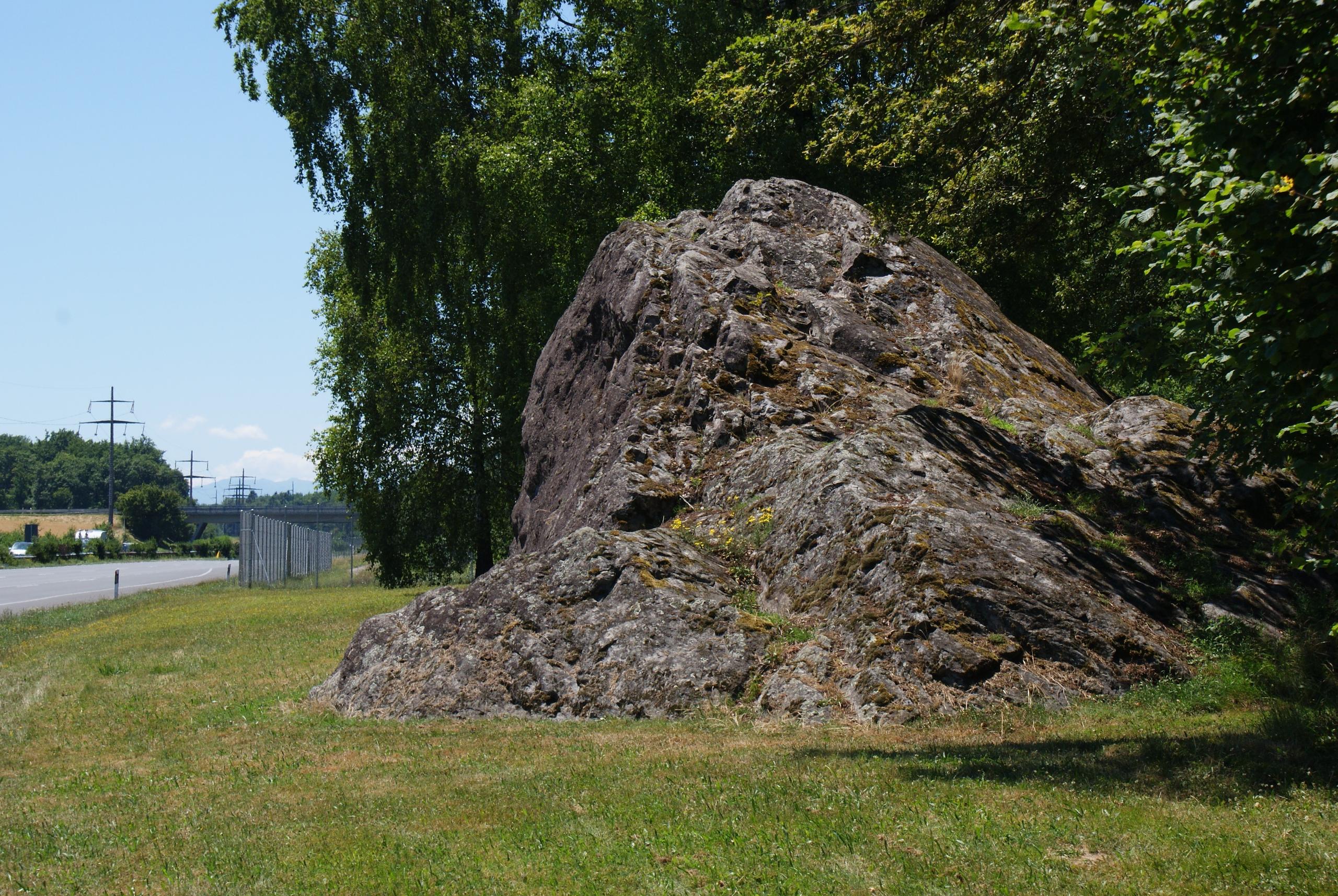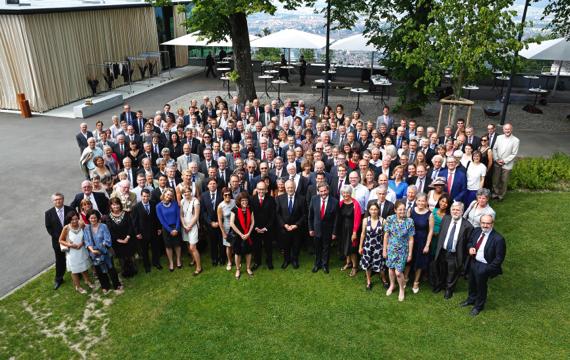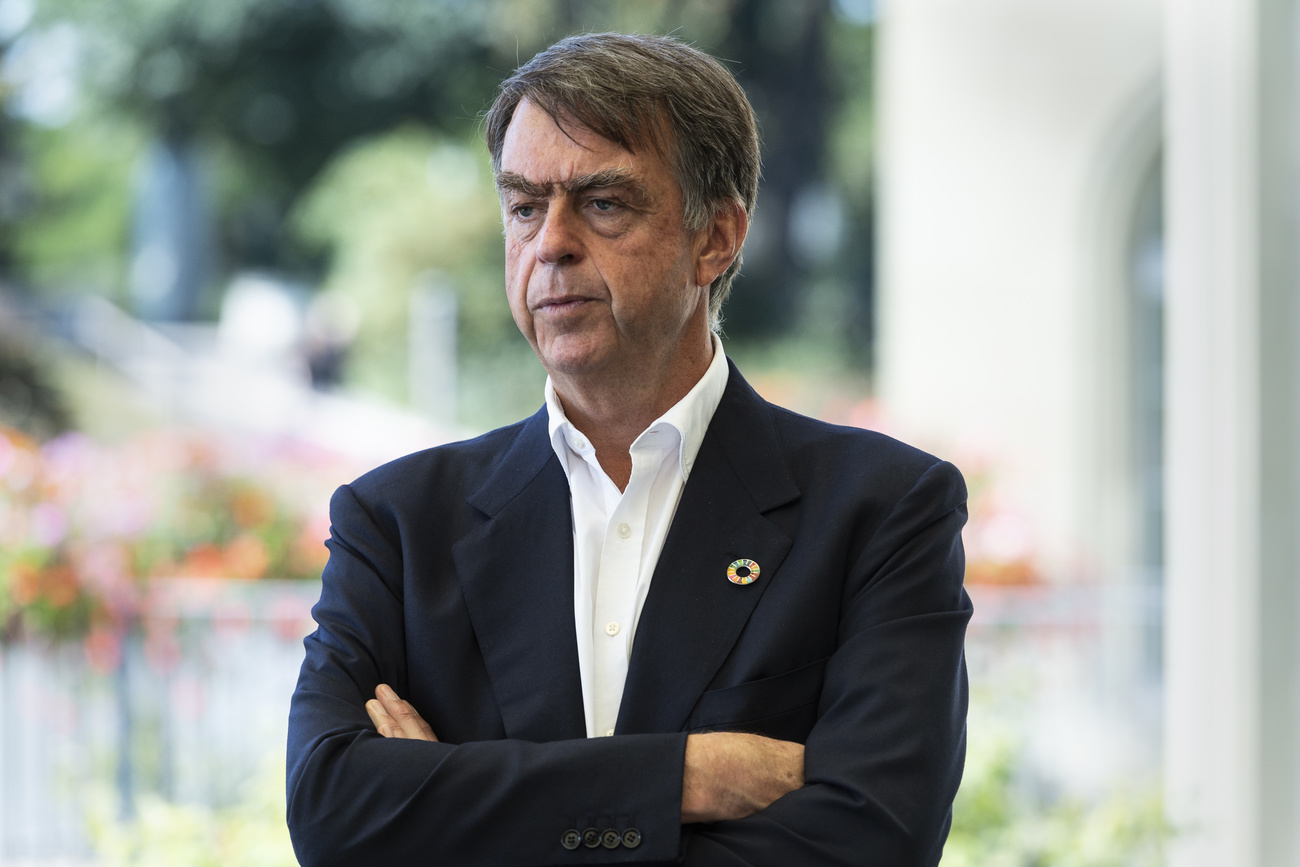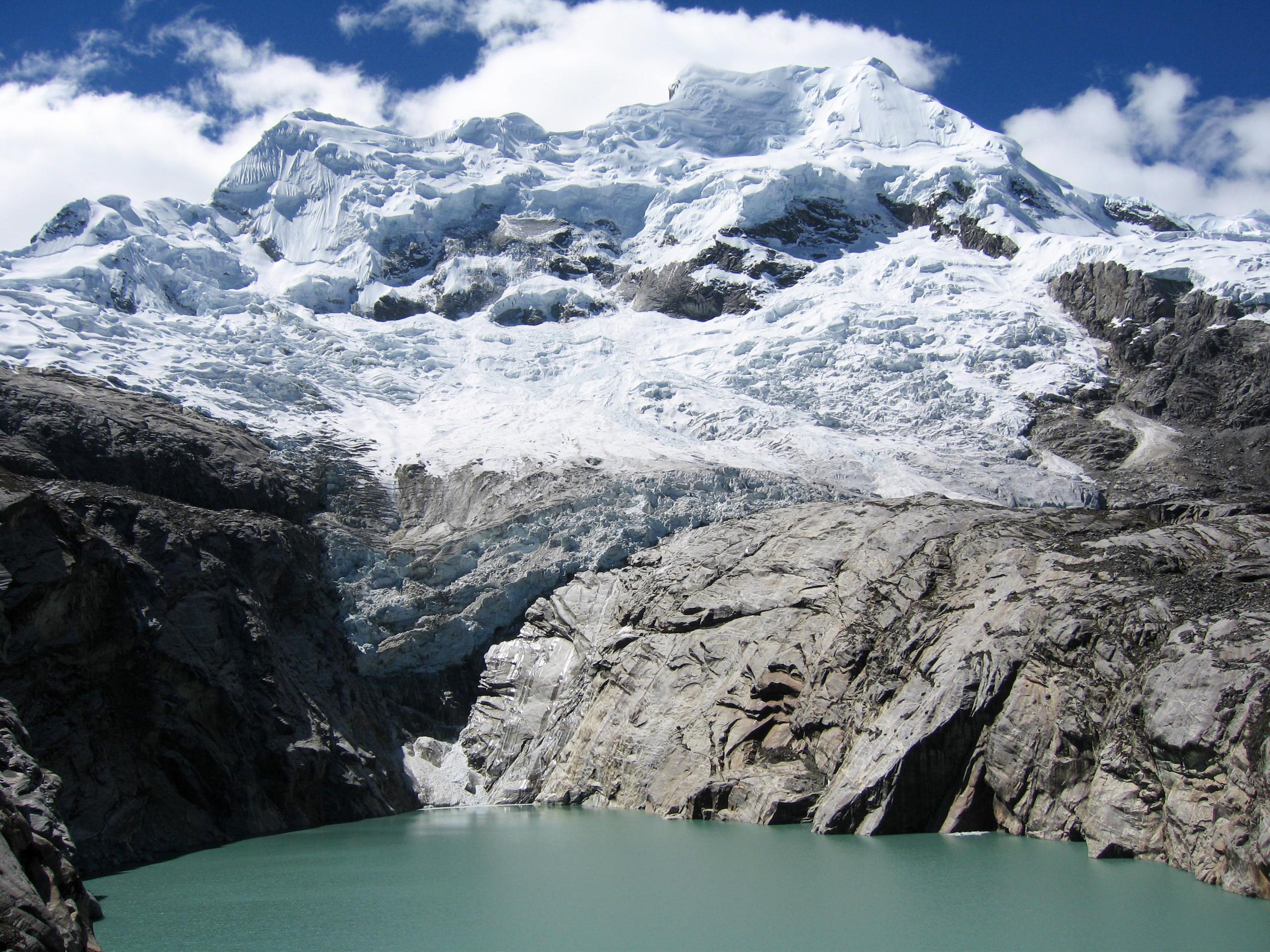The pioneers who made science a national concern

The Swiss Academy of Sciences has been working at the intersection of science and society since 1815. swissinfo.ch takes a look at the Academy’s 200-year legacy - both in Switzerland and the scientific world - starting with some very odd rocks.
Drivers on the motorway between Lausanne and Geneva, need to slow down for a curve in the road just after the Nyon exit. The curve diverts travellers around a massive 800 metre-cubed rock sitting casually under some trees by the side of the road.
The rock, known as Pierre Féline [feline rock] has certainly earned its squatter’s rights: it has been in this spot for some 15,000 – 20,000 years, having been left behind by an ancient glacier. Many similar rocks, dubbed “erratic blocks” for their random placement, are scattered throughout the Swiss Plateau.
Two hundred years ago, erratic blocks were a scientific mystery. Their geological characteristics didn’t match those of the surrounding area, and many assumed that they had been left by Noah’s flood. The correct – and at the time, controversial – explanation was presented by Swiss scientist Louis Agassiz in Neuchâtel at an 1837 meeting of the Swiss Academy of Sciences (SCNAT), which this year celebrates its bicentennial.
Agassiz, who was the president of what was then known as the Helvetic Society for Natural Sciences (HSNS), argued that the massive blocks had hitched rides on the backs of vast swathes of ice that moved slowly across the landscape during an “Ice Age”, when the Earth was much colder. At the time, the idea that Earth systems are dynamic and ever-changing on such a large scale was relatively new.
“The origin of erratic boulders was discussed between 1810 and 1840, and several observations were made in various parts of the Alps by different people – both scientists and non-scientists,” Emmanuel Reynard, a professor of physical geography at the University of Lausanne, told swissinfo.ch.
“Agassiz became famous with his conference in 1837, and since this discourse, the idea that glaciers could have been much larger in the past disseminated rapidly through the international scientific community.”
The open forum that SCNAT provided for Agassiz’s ideas sparked significant progress in climatology, meteorology and geology, and helped birth the new scientific field of glaciology.
A new niche
Unlike other scientific organisations of the time, SCNAT was not an exclusive research group for elite scientists. Rather, co-founders Henri-Albert Gosse, a pharmacist, and Jakob Samuel Wyttenbach, a naturalist and theologian, hoped to open the exploration of science and nature to people in Switzerland, and the rest of the world.
“SCNAT was meant to make science useful for what the founders called ‘patrie’, or the fatherland,” Thierry Courvoisier, president of SCNAT, told swissinfo.ch. Courvoisier also leads the Swiss Academy of Arts and Sciences, of which SCNAT is now a part, along with three other groups dedicated to engineering, medicine and the humanities.
“The HSNS had similar goals to those of SCNAT today: to diffuse science in the world of politics,” Courvoisier says. “At the time, the French word patrie rang the same bells that the word ‘society’ rings today.”
Courvoisier explains that SCNAT’s primary mission is to ensure that knowledge about the natural world is integrated into government decision-making processes.
“We bring knowledge into parliament wherever we can … we create a synthesis of what is known in a given domain and what is relevant for a given decision process,” he says.
Throughout the 19th century, SCNAT developed a series of commissions that were later transformed into elements of Swiss government. The Federal Office of Meteorology and Climatology, the Federal Office of Topography, the Swiss National Park and the Swiss National Science Foundation can all trace their origins back to SCNAT.


Save the rocks
As erratic blocks became more widely accepted as important scientific artefacts, they also became objects of cultural and aesthetic value. In 1867, Swiss professors Alphonse Favre and Bernhard Studer decided to protect the country’s erratic blocks from use as construction material. The scientific argument for such an effort was not yet strong enough to be successful, so they decided to draw on the concept of patrie.
With SCNAT’s help, Favre and Studer disseminated a “Call to Swiss people for asking them to conserve erratic blocks” to all 26 cantons, and even in Germany and France. Their strategy worked: motivated by a desire to protect Switzerland’s natural landscape, cantonal governments worked together to create an inventory of erratic blocks. Many were placed under the protection of individual cantons, communes and scientific societies as a result.
In 1908, one of the largest erratic blocks in Switzerland – the Pierre des Marmettes in Valais – was bought for a staggering CHF31,500 ($33,408) to save it from use in construction. Today, it is the property of SCNAT and remains one of Switzerland’s most famous natural sites.
Small country, big reach
Characteristics unique to Switzerland helped make SCNAT a key player on the early international research scene.
“Early members of SCNAT were in close correspondence with colleagues around the world, and they held many exchanges in Geneva,” says Courvoisier.
“They became leaders on a number of subjects, in part due to Geneva’s geography. By climbing the mountains, you could measure the parameters of the atmosphere up to a couple thousand metres, which you couldn’t do elsewhere. This put SCNAT at the centre of atmospheric physics and geology.”
In the late 19th century, with funding from the Swiss government, SCNAT developed a volunteer-driven meteorological observation network of 88 sites across the country. To help extend their research beyond Swiss borders, SCNAT also worked to standardise systems of weights and measures. Today, SCNAT participates in science policy at the international level as a member of the European Academies Science Advisory Council (EASAC).
Courvoisier says that Switzerland’s small size is a strength when it comes to science on a global scale.
“Switzerland is more geared toward an international perspective, because in a small country, it is easier to recognise that things extend beyond our boundaries.”
Today, the SCNAT network includes over 35,000 experts in over 130 societies in all cantons.
“SCNAT’s role in the coming years will continue to be the passing of knowledge between men and women who study nature in every sense, including astrophysicists, and those who make decisions that shape our living environment,” said Courvoisier in a speech at the official SCNAT bicentennial celebration in June.
“[Earth] requires a coherent and global governance – a reality that is seen more and more clearly. Many academies, including ours, are ready to contribute to this planetary effort for a hospitable Earth for all.”
SCNAT Bicentennial
Events have been scheduled throughout the year , including a “Research Live” tour of 12 different sites across Switzerland from June through October. Each site will feature three educational installations on the theme “Time and Change”, to introduce visitors to important questions facing scientists of the past, present and future. SCNAT has also released the ScienceGuideExternal link app, with over 500 science activities and excursions to explore around Switzerland.

In compliance with the JTI standards
More: SWI swissinfo.ch certified by the Journalism Trust Initiative












You can find an overview of ongoing debates with our journalists here . Please join us!
If you want to start a conversation about a topic raised in this article or want to report factual errors, email us at english@swissinfo.ch.